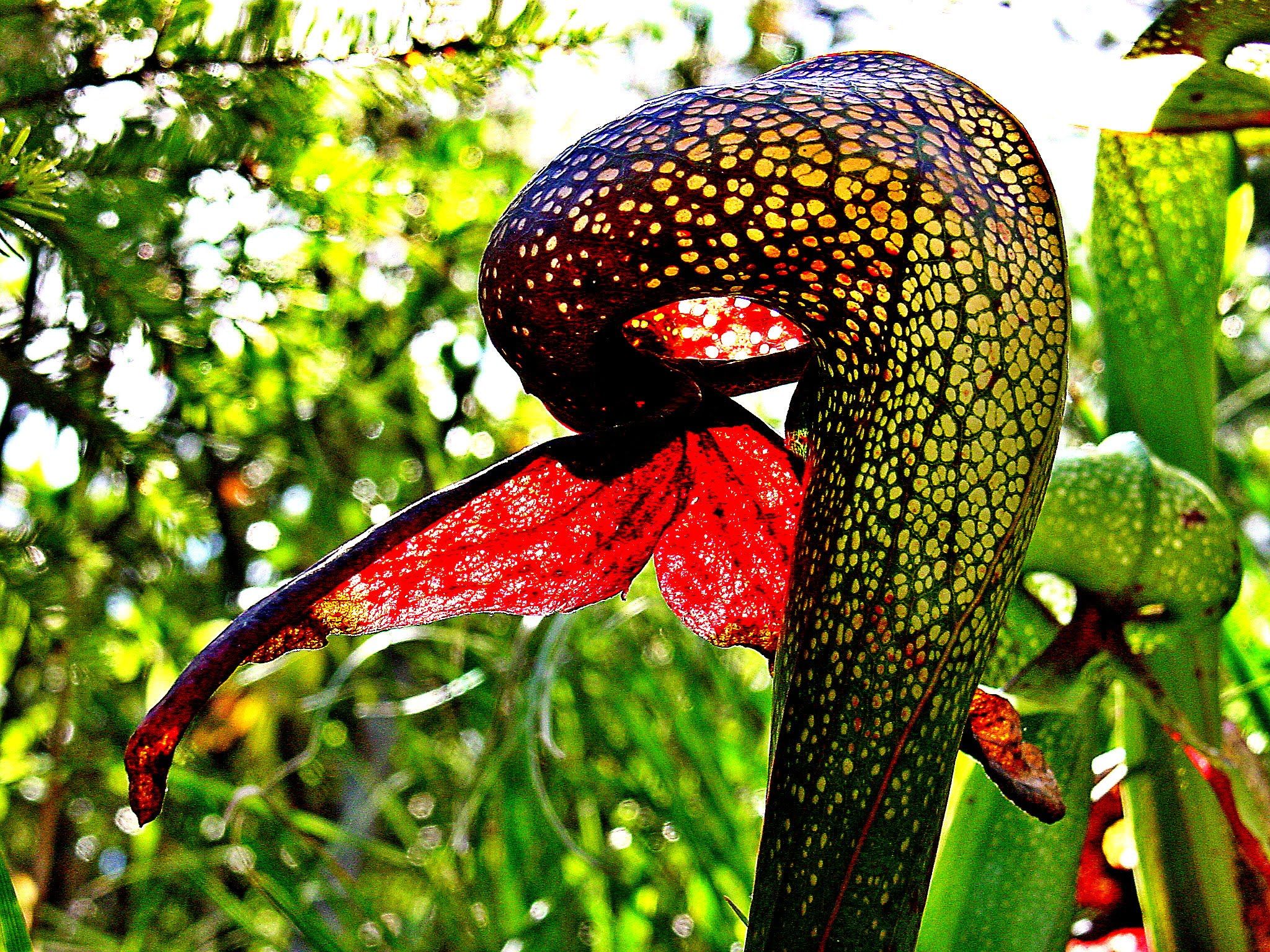Ugliest flower In the misty marshes of Northern California and Oregon, you’ll find an amazing plant called the California Pitcher Plant (Darlingtonia californica).
People also call it the cobra lily or cobra plant because of its cool looks.
This plant is special because it eats bugs! Its leaves look like pitchers, and they have neat designs that trick bugs into coming inside.
Once the bugs are in, they become food for the plant, helping it grow in places where there’s not much food around.
Even though its home is tough, the California Pitcher Plant does really well, showing how clever and tough nature can be. Let’s explore more about this fascinating plant.
Also Read:ugliest couple in the world: Love Beyond Appearance
Taxonomy and Discovery:
Scientific Classification:
Belonging to the Plantae kingdom, within the Ericales order and Sarraceniaceae family, the California Pitcher Plant is categorized under the Darlingtonia genus and D. californica species.
Discovery:
The intriguing cobra plant made its debut during the Wilkes Expedition in 1841, where botanist William D. Brackenridge stumbled upon it at Mount Shasta.
Formally identified in 1853 by John Torrey, who established the genus Darlingtonia, honoring the renowned botanist William Darlington (1782–1863).
Morphology and Adaptations:
Leaf Structure:
The most distinctive feature of the cobra lily lies in its tubular leaves, resembling the poised stance of a cobra.
These transparent leaves create confusion among insects trying to flee, while the forked leaf, with its spectrum of colors from yellow to purplish green, mimics the appearance of fangs or a serpent’s tongue.
Root System:
In contrast to many carnivorous plants, the cobra lily boasts an extensive and sprawling root system.
These roots, fragile yet indispensable, enable the plant to regenerate from its base and survive fire damage.
Interestingly, while the roots thrive in cold subsurface water sources, they deteriorate when exposed to temperatures above 10°C (50°F).
Nitrogen Acquisition:
Thriving in the nutrient-deficient acidic bogs it inhabits; the cobra plant supplements its nitrogen needs through carnivory.
Its modified leaves take the form of pitcher-like structures that ensnare insects.
As this trapped prey decompose within the pitchers, they provide the plant with vital nutrients.
Ecology and Conservation:
Habitat:
The cobra lily flourishes in bogs, seeps, and ultramafic soils found within its natural habitat.
Ultramafic soils, typically lacking in available nitrogen, necessitate the plant’s carnivorous habits.
Conservation Status:
Considered of Least Concern by the IUCN due to its rarity, conservation efforts primarily focus on preserving the cobra lily’s unique habitats.
Cultivation and Curiosity:
Royal Horticultural Society’s Award of Garden Merit:
Cultivation in the UK has earned the cobra plant the prestigious Royal Horticultural Society’s Award of Garden Merit.
Gardeners appreciate its distinctive beauty and adaptability.
Botanical Enigma:
The enigmatic appearance of the cobra lily continues to intrigue botanists and nature enthusiasts alike.
Its significance in nutrient-poor ecosystems highlights the complex relationship between biology and adaptation.
conclusion
The California Pitcher Plant, characterized by its snake-like foliage and complex survival tactics, showcases nature’s ingenuity.
As we admire its unique allure, we acknowledge that even what may appear unattractive can possess deep ecological importance.
Therefore, when encountering a cobra lily, consider the concealed realm of adaptation and perseverance thriving beneath its transparent leaves.